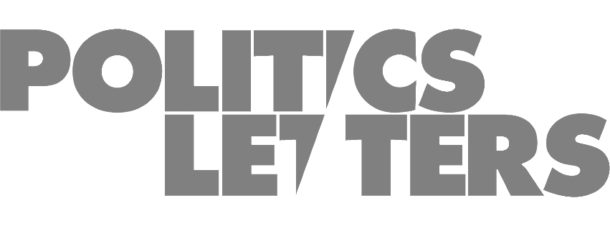By ETIENNE BALIBAR
[Note: This handout accompanied a presentation by Etienne Balibar in the Columbia University Seminar on Literary Theory, December 3, 2015. The respondent was Souleymane Bashir Diagne of the Columbia French Department. Its immediate context included the attack on the journal Charlie Hebdo in January 2015 and the further Paris attacks of the following November. Stay tuned for further commentary.]
- Free speech from subjective “property” to “equal liberty”
1.1 Freedom of expression must be taken in an extensive sense that includes not only diverse means of expression but the complete situations of communication subjected to conflictual relations of power in a “globalized” world.
1.2 “Liberal” definitions and regulations of freedom of expression are conceived in terms of a “subjective right” of the person whose model is private property. Hence regulations are conceived as “limitations” after the event to avoid detrimental effects on other’s rights.
1.3 A more adequate model must rely on the representation of speech and expression as a dialogical process including a reciprocity of effects and an anticipated response to “speech acts,” a response which is preserved or destroyed. Hence free speech should be conceived as a public good, combining “equal liberties” that a democratic constitution ought to collectively maximize.
2. Terror effects in the space of imperfect communication
2.1 The “regulating idea” of perfect communication or “ideal speech situation” (Habermas) where freedom of speech would be “normative” (i.e. either natural or imposed) must be inverted. The real conditions of “unconditional” democratic exercise of free speech concern the transformation of the always already existing situation of “imperfect communication” which is saturated with violence and where terror effects are virtually possible, or become actual.
2.2 It is true, but insufficient, to explain that the social “classes” which possess economic, cultural and geopolitical power also control, i.e. monopolize to a greater or lesser extent, the possibilities of legitimate “expression,” hence tend to privatize the “public good” of free speech.
2.2.1 Why? Because one has to account for the exclusionary effect inherent in the “codes” of dominant discourses, invalidating “subaltern” discourses and preventing their voicing in the public space. This is structural discursive violence: the “subaltern cannot speak” and she or he who cannot speak is/remains a “subaltern.”
2.2.2 Structural discursive violence randomly generates different reactions: resistance, claims by repressed voices, or counter violence (discursive and non-discursive), therefore performative displacement or mimetism.
2.3 It is true that structural discursive violence relegates more or less completely many citizens (perhaps the majority) to a position outside of “citizenship” in the active sense. But to say so is insufficient. Structural violence also deprives society of the possibility to know its own constitution. It extends a veil of ignorance over its own constituency.
2.3.1 This is true for the “dominant,” who tend to justify this ignorance in terms of “universalistic” discourses, as well as for the dominated.
2.3.2 “Acts of terrorism” and “counter-terrorism” are essentially aiming at suppressing every possibility of a “feedback” or “response” that is not mimetic to any interpellation: therefore censorship and self-censorship. The “threat” would not be effective if the “veil of ignorance” did not blind everyone with respect to the identity and position of her “others,” hence also of herself.
2.4 The political objective of establishing the conditions of unconditional freedom is not simply to create a constitutional framework for the freedom of expression, but to listen to suppressed or distorted voices, to make room for their conflictual utterance, and to lift the veil of ignorance– in other words, to cross and displace every boundary that limited the reciprocity of interpellations.
3. “Blasphemy”, “Insult”, and the Metastases of the Sacred
3.2 The Charlie Hebdo affair, with its multiple contexts, retroactively appears as a multiplier of terror effects which powerfully contributed to framing perceptions and discourses before they were “captured” by war.
3.2 On the one hand, there is need to discuss the claim by authors/publishers of the cartoons that they were uttering a sign of “equality” towards Muslim citizens. The subtext of this claim is the enactment of a typical discursive violence also illustrated by injunctions to Muslim citizens to publicly “disavow” terrorism. Muslims were reduced to silence through the double bind of accepting a negative (criminal) image of their identity or distancing themselves from their own “religion.”
3.3 On the other hand, there is need to discuss the claim by Muslim voices that the outrage at the cartoons had nothing to do with blasphemy but rather was linked to a feeling of collective insult or injury wounding the “community.” This seems to be both true and untrue.
3.3.1 “Secularist” discourses use “blasphemy” as a projective category to imaginarily penetrate the “theological-political” space of the “Muslim world” while remaining protected in the “Western secular” space and claiming its state protection;
3.3.2 Behind the question of “blasphemy” there lies the real question of the importance of sacred values, institutions, and words which exist to various degrees in every society, either in religious or secular forms (the latter, essentially national), or a combination of both. The same speakers who denounce the repressive effects of the sacred in non-Western societies are often blind or biased when it comes to the repressive effects of the sacred in Western democratic societies.
3.3.3 The mimetic response of Islamic fundamentalism (and a fortiori terrorism) to Western secular (republican) islamophobia also played on the “confusion” of religious symbolism (the sacred) with an “organic” solidarity of the believers by trying to revive an archaic concept of the ummah. “Insulting the honor” of the Prophet, forcing “Muslim women” to take off their veils (which are part of their identity) and similar acts are presented as physical injuries inflicted on a collective “body.”
3.4 Muslims and non-Muslims alike are thus caught in the production of an “Islamic identity” that relies on projections based on fear, hatred and above all ignorance. To “deconstruct” these mechanisms is the task of “intellectuals” trying to make free speech possible, hence real.






No Comments